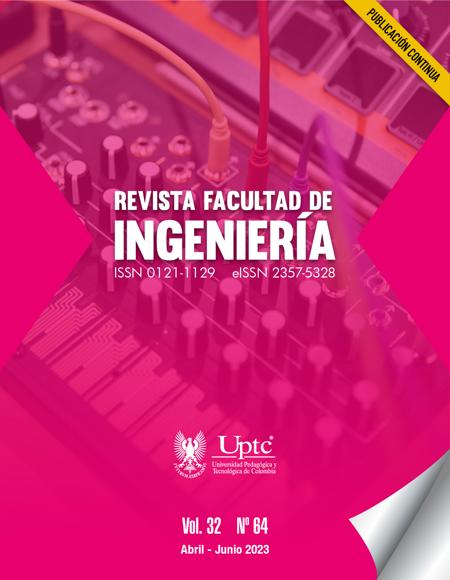Methodological Proposal to Determine Technology Maturity Levels TRL 4 to TRL 7 for Mobile Applications

Abstract
Industries undergoing transformation strategies for improvement can use mobile applications (Apps) to enhance production efficiency, ensure greater coverage, and optimize costs and times. These crucial aspects are imperative to foster confidence among stakeholders. To satisfy this need, maturity assessment models such as the Technology Readiness Levels (TRL) have been developed. This article proposes a methodology to ease the determination of mobile app maturity by mapping them to TRL levels 4 to 7. A review of TRL's application to software products, including mobile applications, indicates that research on it has been conducted but confirmed the absence of a methodology to evaluate their development maturity. With this input in mind, we reviewed different methodologies employed for technological assessment in Apps, selected the most suitable, and designed a set of activities and artifacts that constitute the tool. The methodology was validated through the evaluation of a technological product, and its ability to assess technological maturity at TRL levels 4 to 7 was confirmed. Consequently, we conclude that having tools such as the one presented here is of paramount importance to support research and innovation processes, ensure technological product quality, and comply with the TRL model.
Keywords
backend, frontend, mobile applications, technology maturity levels, user interfaces
References
- J. C. Mankins, Technology readiness levels,NASA, Washington D. C., 1995.
- J. C. Mankins, “Technology readiness assessments: A retrospective,” Acta Astronautica, vol. 65, no. 9-10, pp. 1216-1223, 2009. https://doi.org/10.1016/j.actaastro.2009.03.058. DOI: https://doi.org/10.1016/j.actaastro.2009.03.058
- J. Straub, "Evaluating the Use of Technology Readiness Levels (TRLs) for Cybersecurity Systems," in IEEE International Systems Conference (SysCon), Vancouver, BC, Canada, 2021, pp. 1-6. https://doi.org/10.1109/SysCon48628.2021.9447130 DOI: https://doi.org/10.1109/SysCon48628.2021.9447130
- S. M. Saad, R. Bahadori, H. Jafarnejad, M. F Putra, “Smart Production Planning and Control: Technology Readiness Assessment,” Procedia Computer Science, vol. 180, pp. 618-627, 2021. https://doi.org/10.1016/j.procs.2021.01.284 DOI: https://doi.org/10.1016/j.procs.2021.01.284
- M. Richardson, M. Gorley, Y. Wang, G. Aiello, G. Pintsuk, E. Gaganidze, M. Richou, J. Henry, R. Vila, M. Rieth, “Technology readiness assessment of materials for DEMO in-vessel applications,” Journal of Nuclear Materials, vol. 550, e152906, 2021. https://doi.org/10.1016/j.jnucmat.2021.152906 DOI: https://doi.org/10.1016/j.jnucmat.2021.152906
- K. B. Kota, S. Shenbagaraj, P. K. Sharma, A. K. Sharma, P. K. Ghodke, W. Chen, “Biomass torrefaction: An overview of process and technology assessment based on global readiness level,” Fuel, vol. 324, e124663, 2022. https://doi.org/10.1016/j.fuel.2022.124663 DOI: https://doi.org/10.1016/j.fuel.2022.124663
- R. Ruiz Seva, A. Li Sin Tan, L. M. Sequerra Tejero, M. L. Dorothy S. Salvacion, “Multi-dimensional readiness assessment of medical devices,” Theoretical Issues in Ergonomics Science, vol. 24, no. 2, pp. 189-205, 2023. https://doi.org/10.1080/1463922X.2022.2064934 DOI: https://doi.org/10.1080/1463922X.2022.2064934
- G. T. Jesus, M. F. Chagas Junior, "Using Systems Architecture Views to Assess Integration Readiness Levels," IEEE Transactions on Engineering Management, vol. 69, no. 6, pp. 3902-3912, 2022. https://doi.org/10.1109/TEM.2020.3035492 DOI: https://doi.org/10.1109/TEM.2020.3035492
- F. Martínez-Plumed, E. Gómez, J. Hernández-Orallo, “Futures of artificial intelligence through technology readiness levels,” Telematics and Informatics, vol. 58, e101525, 2021. https://doi.org/10.1016/j.tele.2020.101525 DOI: https://doi.org/10.1016/j.tele.2020.101525
- M. Sarfaraz, B. J. Sauser, E. W. Bauer, “Using System Architecture Maturity Artifacts to Improve Technology Maturity Assessment,” Procedia computer Science, vol. 8, pp. 165-170, 2012. https://doi.org/10.1016/j.procs.2012.01.034 DOI: https://doi.org/10.1016/j.procs.2012.01.034
- T. Altunok, T. Cakmak, “A technology readiness levels (TRLs) calculator software for systems engineering and technology management tool,” Advances in Engineering Software, vol. 41, no. 5, pp. 769-778, 2010. https://doi.org/10.1016/j.advengsoft.2009.12.018 DOI: https://doi.org/10.1016/j.advengsoft.2009.12.018
- J. R. Armstrong, “Applying Technical Readiness Levels to Software: New Thoughts and Examples,” in INCOSE International Symposium, 2010, pp. 838-845. https://doi.org/10.1002/j.2334-5837.2010.tb01108.x DOI: https://doi.org/10.1002/j.2334-5837.2010.tb01108.x
- R. S. Pressman, B. R. Maxim, Software Engineering: A Practitioner's Approach, McGraw-Hill, 2014.
- F. F. Tsui, O. Karam, B. Bernal, Essentials of Software Engineering, Jones & Bartlett Learning, 2016.
- P. Olivier, X.-H. Ngo, A. Francillon, "BEERR: Bench of Embedded System Experiments for Reproducible Research," in IEEE European Symposium on Security and Privacy Workshops, Genoa, Italy, 2022, pp. 332-339. https://doi.org/10.1109/EuroSPW55150.2022.00040 DOI: https://doi.org/10.1109/EuroSPW55150.2022.00040
- N. Nazar, Y. Hu, H. Jiang, “Summarizing Software Artifacts: A Literature Review,” Journal of Computer Science and Technology, vol. 31, pp. 883–909, 2016. https://doi.org/10.1007/s11390-016-1671-1 DOI: https://doi.org/10.1007/s11390-016-1671-1
- H. Ibrahim, B. H. Far, A. Eberlein, "Scalability improvement in software evaluation methodologies," in IEEE International Conference on Information Reuse & Integration, Las Vegas, NV, USA, 2009, pp. 236-241. https://doi.org/10.1109/IRI.2009.5211557 DOI: https://doi.org/10.1109/IRI.2009.5211557
- A. Park, M. Wilson, K. Robson, D. Demetis, J. Kietzmann, Interoperability: Our exciting and terrifying Web3 future, Business Horizons, 2022. https://doi.org/10.1016/j.bushor.2022.10.005 DOI: https://doi.org/10.1016/j.bushor.2022.10.005
- J. Nielsen, Usability Engineering, Morgan Kaufmann, 1994. DOI: https://doi.org/10.1016/B978-0-08-052029-2.50009-7
- T. Chassin, J. Ingensand, “E-guerrilla 3D participation: Approach, implementation, and usability study,” Frontiers in Virtual Reality, vol. 3, e1054252, 2022. https://doi.org/10.3389/frvir.2022.1054252 DOI: https://doi.org/10.3389/frvir.2022.1054252
- D. P. Simon, The art of guerilla usability testing, 2023. https://www.uxbooth.com/articles/the-art-of-guerrilla-usability-testing/.